
Indian crude steel production has observed significant lows in April 2020 post lockdown and revived significantly with strong economic support from the government.
“However, revival is not up to the level of the previous year with most of the private large integrated mills operating at about 80 percent of their production levels, while state-owned mills are still lagging behind. The secondary steel producers continue to struggle with capacity utilization at around 50 – 55 percent, due to low domestic demand, shortage of workforce, disruption in supply chain and liquidity related issues,” NMDC said in its annual report.
While crude steel production for FY21 is projected to decline by 15 percent over FY20 to produce 95 million tons due to the Covid outbreak, NMDC sees V-shaped recovery in FY22 to attain production of 110 Mt due to strong economic fundamentals.
NMDC is bullish on the growth prospects of India’s steel industry with its competitive advantages and the impetus being given by the government to the steel sector. Growth in domestic steel demand in all key sectors, such as infrastructure, housing, automobile, etc. is envisaged to support domestic demand. At the same time, global demand in the near future will also support the domestic players. Further, the increase in demand for high-grade ore and the price of iron ore in the international market is expected to support NMDC in improving its performance in terms of quantity as well as EBITDA margins.
Exports to play key role
“On account of the competitiveness of Indian steel in global markets and subdued domestic demand till December, steel exports are expected to remain dominant till Q3,” NMDC said.
هذه القصة مأخوذة من طبعة September 2020 من Steel Insights.
ابدأ النسخة التجريبية المجانية من Magzter GOLD لمدة 7 أيام للوصول إلى آلاف القصص المتميزة المنسقة وأكثر من 9,000 مجلة وصحيفة.
بالفعل مشترك ? تسجيل الدخول
هذه القصة مأخوذة من طبعة September 2020 من Steel Insights.
ابدأ النسخة التجريبية المجانية من Magzter GOLD لمدة 7 أيام للوصول إلى آلاف القصص المتميزة المنسقة وأكثر من 9,000 مجلة وصحيفة.
بالفعل مشترك? تسجيل الدخول

Steel's Net Zero mission
The country’s commitment to achieving Net Zero within a targeted timeframe will now propel its steel sector towards a sustainable future in line with global trends.
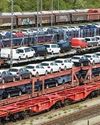
Fuel Price Hike, Supply Chain Disruption Hurt Festive Sales
Supply chain disruptions and fuel price hikes have hurt festive sales in a big way as most auto majors posted decline in sales in October.

Seaborne coking coal offers remain range-bound
Seaborne coking coal offers moved in a narrow range in October amid global supply tightness and healthy spot demand.
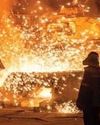
Global crude steel output down 8% in September
China manufactured 74 mt in September, fall of 21% y-o-y while India’s production went up by 7% to 10 mt.
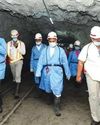
MOIL embarks on expansion projects
“Even though our country is blessed with manganese ore reserves, we import 50% of the domestic requirement. We have to lower our import dependence and save precious foreign exchange.” Ram Chandra Prasad Singh, Steel Minister

Iron ore handled by major ports down 17% in H1
The 12 major Indian ports handled 27 mt of iron-ore during H1 of 2021, down by 17% from 33 mt recorded for the corresponding period of previous year.
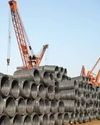
Shrinking China output to boost India exports
“In the third quarter of 2021, the company actively responded to the pressure from external policies, such as production curtailment and dual control system on energy consumption and intensity, as well as coal resource shortage and surging prices.” Baoshan Iron and Steel Co Ltd

Indian Railways' iron-ore handling up 25% in H1
Indian Railways in April-September of 2021 (H1) transported 84 mt of iron ore, up by 25% over 67 mt during April-September 2020.
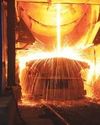
September crude steel production up 7.2% y-o-y
India’s crude steel production in September 2021 grew 7.2 percent to 9.547 million tons (mt) over September 2020 but was down by 3.2 percent from August 2021 output, provisional steel ministry data showed.

“Five enablers: way forward to sustainable cleaner steel”
Right and scalable technology, appropriate policy guidance by government, access to finance to fund transition, willingness of customers to pay for cleaner products and infrastructure for use of new technologies are the need of the hour for the sustainable and cleaner steel industry, according to Madhulika Sharma, Chief Corporate Sustainability, Tata Steel.